I’ve always loved the spoken introduction to this track by DJ Shadow.
That approach to music promised a lot - as in it signified deep concentration and a hitherto unknown group of interesting people approaching music in a new way. 90s early technological crudity I guess. The promise was wonderful, like 80s indie cinema. It didn’t really lead to much, thats what it was! I tried to write about this in Parking Lot Scenes. You might expect more from an artist or a scene but mostly, its just great that you got that whiff, that suggestion, that moment, that thing itself.
There was a story in the paper about the water level in the area I grew up in in the South East of South Australia. How it was really declining and the fact that it might be irreversible. It might sound dull but it really disturbed my mind.
photo from 1880 of all the lakes. Leg Of Mutton Lake in the foreground no longer exists.
I have written before about how I grew up in that area of great natural beauty surrounded by artificial plantations of imported trees. Water was abundant and helped all of that. Too much water. Farmers employed water diviners and sank bores to get their own flow happening. Fresh water still runs directly into the ocean at Eight Mile Creek, at the bay. The city of Mount Gambier is built around an extinct or dormant volcano and there are - or were- a series of freshwater lakes within that caldera. There was the Leg Of Mutton Lake which had pretty much disappeared by the time I was around, Brownes Lake which I can dimly remember, the Valley Lake which still exists but is much diminished, and the largest of all - which provides the towns drinking water - the magnificent Blue Lake. The Blue Lake does actually turn a brilliant Blue colour every summer and this change adds to the mystic, unknowable aura of the place. We were told that it was bottomless when we were children , well perhaps we told each other that. It is fed by a complex of underground streams and some sort of mineral exchange or filtering (The area is called The Limestone Coast) leads to the blue effect on the water. The town is surrounded by smaller sinkholes and shafts, one right in the centre of the town called The Cave Gardens , and these inspired tales of tunnels leading to other worlds and escaped criminals and haunted animals down inside them.
But aside from all that, to stand above the Blue Lake and marvel at the water below is quite a restful experience, you feel its ancient presence.
Photo from 1936
Leg Of Mutton Lake 1905
Valley Lake 1976. We would dive in from a platform on the far right of this image and swim to a pontoon in the middle. Swimming hasn’t been allowed for decades now.
Valley Lake now
There has always been a lot of cave diving in the area. What would possess people to skinny down small openings in the earth and squeeze through tight stretches of underground tunnels where there was no turning around possible is beyond me. Here is a list of sites if you are so inclined.
One cave is in the middle of one of the most established, residential areas of the town, right underneath schools, the highway and shops. Divers discovered a new chamber to it only a few years ago.
Though I grew up in the area (I left home at the age of eighteen-like everybody did then) , it was only in 2023 that I went to one of the remarkable series of freshwater “ponds” that are in the strange area right near the coast. Ewens Ponds is so beautiful. Clear, icy water that you can experience by walking out into it via wooden walkways. You can swim there but have to wear a wetsuit and also you have to get permission. The sound of the frogs was immense.
South Australia is the dryest state in Australia but you would not think that if you were in the South East. I read a fascinating book about the explorer John Macdouall Stuart who found a way north out of Adelaide. It sounds simple but there was a problem in that the soil was so strangely thin, like a thin cake covering over mud that horses could not get a footing on. Stuart found a way and the hooves found their way onto country that had only ever been padded on by kangaroos and other mammals, including human beings. Stuart was working for a rich businessman (South Australia being founded as a business project rather than a convict colony) barely twenty years after the settlement of Adelaide had been established. He seemed to be mad for the drink and only really content when driving a team of animals and men into parts unknown looking for an end to the land or an inland sea, battling scurvy and sun blindness all the while. (I’ve known roadies and musicians like that! They need the weird discipline of solving a series of simple problems each day and then moving on and doing it again). It was the era of Burton and Speke in Africa searching for the source of the Nile and Burke and Wills walking into oblivion from out of Melbourne. Stuart made six or so journeys north from Adelaide and the highway from the centre up to Darwin is named after him.
There was a moment in the book where he came to a waterhole in an otherwise arid area (he discovered a lot of desert country) , with the help of an aboriginal guide. Just a small place where water ran to , underground, and which the native people had known about or could recognize in similar landscapes from experience. Again, delicate soil, just holding together. Stuart told his rich benefactor who led a herd of cattle to it and they stomped all over that delicate situation, that barely holding event of water, gravity and earth, and it was gone forever.
You get that sense in South Australia. The area known as the Coorong which stretches from Adelaide all the way down the South East was water and land but not at all defined as to the boundaries of either. Just swampy, loose country. A lot of it survives but it seems that the main object of civilizing the land was to drain it all to make farming land.
I should say that I am no expert here and am just revealing and sharing my crude feeling and understanding of a place! If you need further information, please consult an expert!
South Australia also lacked trees to begin with. There were some areas of native trees around but not enough. Farming land meant clearing them of what tress there were. The State government started working on experiments with imported species in 1876 and Radiata Pine became the chosen softwood for plantations around Mount Gambier from 1907. The State government also set up the mills in surrounding towns like Mount Burr and Nangwarry.
Because there was so much water.
Some people at the time saw it as a mistake to alter the local environment so drastically. An 1878 edition of Mount Gambier's newspaper, The Borderwatch, said the Forestry Board had "set itself to destroy the natural beauty of the Reserve". "It was, we believe, a mistake to include our Lakes among the Forest Reserves; but it will be greater still if damage is done that will take many years to undo," the reporter said.
All my growing up was in this world of abundant water and being surrounded by creepy, regimented forest plantations of pine trees. The lakes and the sea and the caves. It was nature and un-nature. We swam in summer at the Valley Lake and at the Little Blue Lake half way to the bay. Idyllic!
Those recurring scenes of cut tree trunks on the backs of trucks in Twin Peaks decades later just looked normal to anyone from the South East. The rest of the audience applauded its “eerieness”.
We lived with that eerie stuff. We had the Tantanoola Tiger, Max Harris and Ern Malley and Adam Lindsay Gordon blowing his brains out on Brighton Beach. I played football occasionally at the nearby town of Millicent and also went to the drive in there (and was later chased out of the pub mid set - with my band mates- by the irate publican and audience - for playing such horrible music to their fool bumpkin ears) and each trip involved breathing in the acrid, overwhelming chemical stench of the Cellulose toilet paper factory. (Another government funded industry).
I have only ever caught a plane to Mount Gambier once or twice and was amazed at all the guns being checked in by a travelling pistol club on one of them and found the “Welcome to Mt Gambier - Home of the potato!” sign in the waiting room amusing.
It turns out, as the story linked to in the beginning of this suggests, that the water is disappearing. Because of the reckless 24 hour pivot point irrigation (a lot of which is to make the potatoes look more attractively pale) and because of a few more people living there now and weren’t the lakes dry when the explorer and land grabber Henty walked past way back in 1834? and because of the trees! Trees can be evil!
I am trying to fine tune my understanding of my moment in this galactic spectacle into which I fell. Sitting here in my autumn tones, covered in the dust and debris of a happenstance life.
I was born onto a soil which had been broken by hooved beasts only 100 years previously. The trees were crowding us and they were all parasitic clones. They were also sucking up all the water that had been gifted to the land by centuries, millenia of shifting soil and rock and earthly intestinal motions. Terrestrial Inertia. The guts of it. The meat and potatoes which we ate daily were also cursing the earth and the water and even more so for possible but not exactly guaranteed future generations.
My moment had begun with me believing so much around me was solid and long standing and so, inevitable. But the only inevitable thing was the exhaustion of the natural gifts that were being so extravagantly wasted.
The Little Blue Lake, half way to the bay, another teenage summer swimming idyll.
Some perspective.
There was the nearby road that I grew up knowing as Boandik Terrace and the Aged Care facility called Boandik Lodge. The original inhabitants of the area were the Bouandigh or Boandik. ‘Boandik’ was one way of spelling the name that came from an oral language, (it’s also written as Buandig, Booandik and Bunganditj) . They lived in the area that came to be known as the Glenelg River (Nelson) to Rivoli Bay North (Beachport) and ‘inland for about thirty miles’. They had lived in the area for tens of thousands of years. Growing up, though, there was little interaction with or even presence of Indigenous people. Some must have been Stolen Generation kids and others, I realise now, had obvious Aboriginal features but didn’t identify as such. They were invisible. It’s great that things have changed in some ways.
There were some Indigenous kids in the local football teams. One lonely boy in Millicent and a tough lot of brothers who all played for West Gambier. I say “tough” because they could all fight and they were feared, even though they were not the biggest of kids. We also saw black fellows in the boxing tents at the show.
There are still place names in the area such as Picaninnie Ponds and Blackfellows Caves. And others with actual Boandik language origins such as Tarpeena, Nangwarry, Kalangadoo, Mingbool and Mil Lel.
The street I grew up on was called Werona, ‘Weroona’ is an Aboriginal word meaning ‘place of rest’.
The other clans occupied country from between Lacepede Bay to Bordertown. The Boandik or Buandig shared tribal borders with the Ngarrindjeri people of the Coorong and Murray mouth to the west, the Bindjali and Jardwadjali to the north and the Gunditjmara people to the east.
Near Warrnambool is the settlement of Framlingham. In 1861 Framlingham was designated as the last Reserve for aboriginals in the state of Victoria. Tribal groupings were ignored and three different clans were moved into this unhappy place. Girai Wurrung (near what became the Mortlake Area) along with surviving Djargurd Wurrung (near what is now the Camperdown). The tribe called Gunditjmara refused to join and established a Reserve nearer to their traditional lands called Lake Condah, near Portland. These people are considered unique in Australia. They lived in large villages constructed of stone huts and harvested eels and fish in a sophisticated network of weirs and traps, dated to at least 6600 years ago. This area is managed by the Gunditjimara and is a World Heritage site.
A poem by Max Harris
The Tantanoola Tiger
There in the bracken was the ominous spoor mark,
Huge, splayed, deadly, and quiet as breath,
And all around lay bloodied and dying,
Staring dumbly into their several eternities,
The rams that Mr Morphett loved as sons.
Not only Tantanoola, but at Mount Schanck
The claw welts patterned the saplings
With mysteries terrible as Egypt's demons,
More evil than the blueness of the Lakes,
And less than a mile from the homestead, too.
Sheep died more rapidly than the years
Which the tiger ruled in tooth and talk,
And it padded from Beachport to the Border,
While blood streamed down the minds of the folk
Of Mount Gambier, Tantanoola, of Casterton.
Oh this tiger was seen all right, grinning,
Yellow and gleaming with satin stripes:
Its body arched and undulated through the tea-tree;
In this land of dead volcanoes it was a flame,
It was a brightness, it was the glory of death,
It was fine, this tiger, a sweet shudder
In the heath and everlastings of the Border,
A roc bird up the ghostly ring-barked gums
Of Mingbool Swamp, a roaring fate
Descending on the mindless backs of grazing things.
Childhoods burned with its burning eyes,
Tantanoola was a magic playground word,
It rushed through young dreams like a river
And it had lovers in Mr Morphett and Mr Marks
For the ten long hunting unbelieving years.
Troopers and blacks made safari, Africa-fashion,
Pastoral Quixotes swayed on their ambling mounts,
Lost in invisible trails. The red-faced
Young Lindsay Gordons of the Mount
Tormented their heartbeats in the rustling nights
While the tiger grew bigger and clear as an axe.
'A circus once abandoned a tiger cub.'
This was the creed of the hunters and poets.
'A dingo that's got itself too far south'
The grey old cynics thundered in their beers,
And blows were swapped and friendships broken,
Beauty burst on a loveless and dreary people,
And their moneyed minds broke into singing
A myth; these soured and tasteless settlers
Were Greeks and Trojans, billabong troubadours,
Plucking their themes at the picnic races
Around the kegs in the flapping canvas booths.
On the waist-coats shark's teeth swung in time,
And old eyes, sharply seamed and squinting,
Opened mysteriously in misty musical surprise,
Until the day Jack Heffernan made camp
By a mob of sheep on the far slope of Mount Schanck
And woke to find the tiger on its haunches,
Bigger than a mountain, love, or imagination,
Grinning lazily down on a dying ewe,
And he drew a bead and shot it through the head.
Look down, oh mourners of history, poets,
Look down on the black and breeding volcanic soil,
Lean on your fork in this potato country,
Regard the yellowed fangs and quivering claws
Of a mangy and dying Siberian wolf.
It came as a fable or a natural image
To pace the bars of these sunless minds,
A small and unimpressive common wolf
In desperately poor and cold condition.
It howled to the wattle when it swam ashore
From the wreck of the foundered Helena,
Smelt death and black snakes and tight lips
On every fence-post and slip-rail.
It was three foot six from head to tail.
Centuries will die like swatted blowflies
Before word or wolf will work a tremor
Of tenderness in the crusty knuckles
Around the glasses in the Tantanoola pub
Where its red bead eyes now stare towards the sun.
PS - In regard to the story in the Guardian about the declining water, there are three levels of government. The Local council (s) , The Sate Government and the Federal.
It seems to be all up to the Local council. The state member seems to have spent most of the last few years battling corruption charges and the Federal member (The seat of Barker stretches from the bottom of the state to Adelaide) - when contacted - said it has nothing to do with him and directed me to the others.





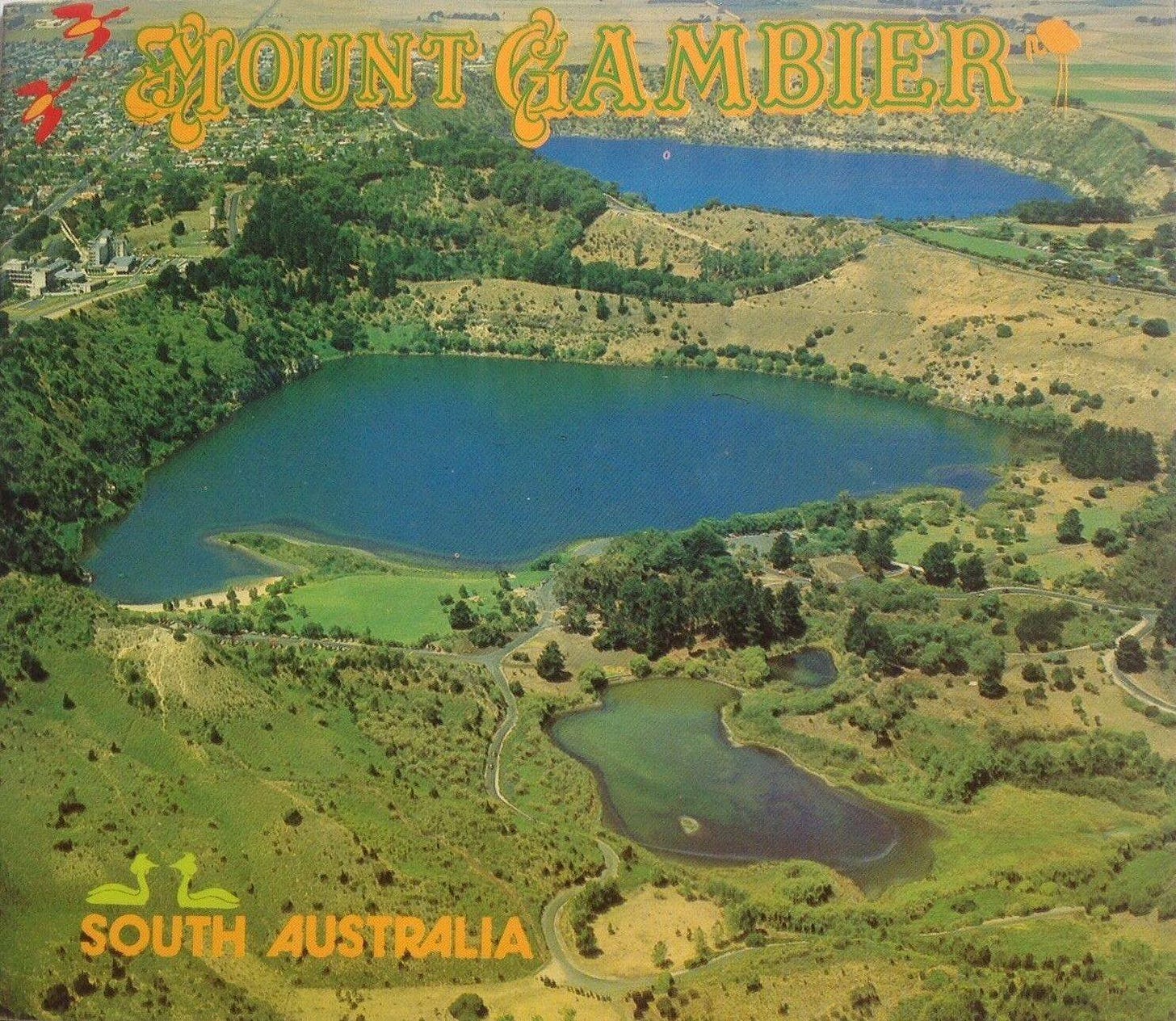
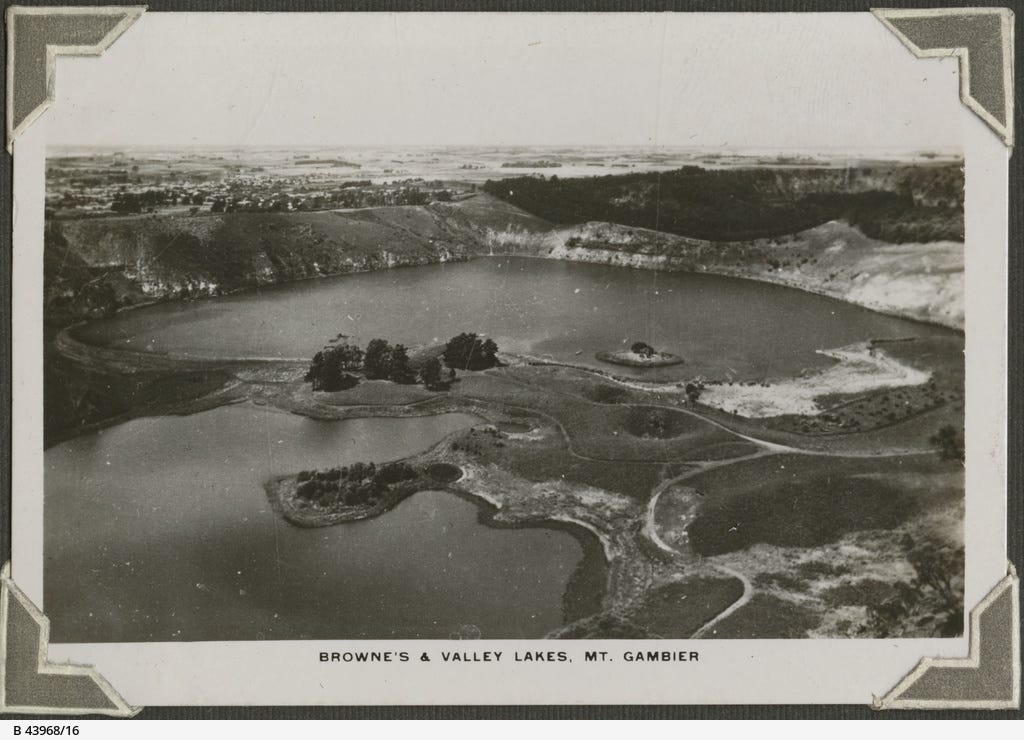

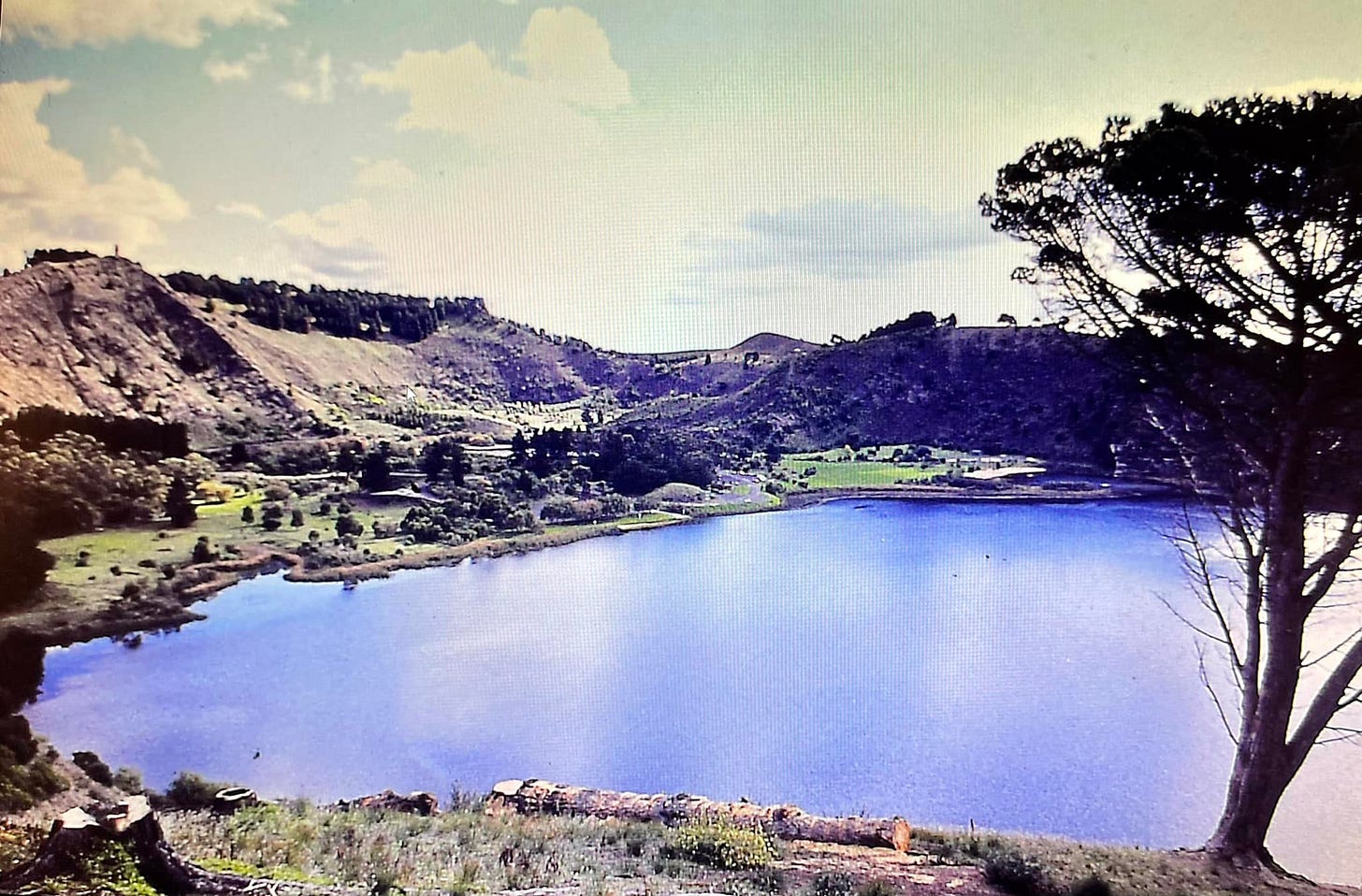
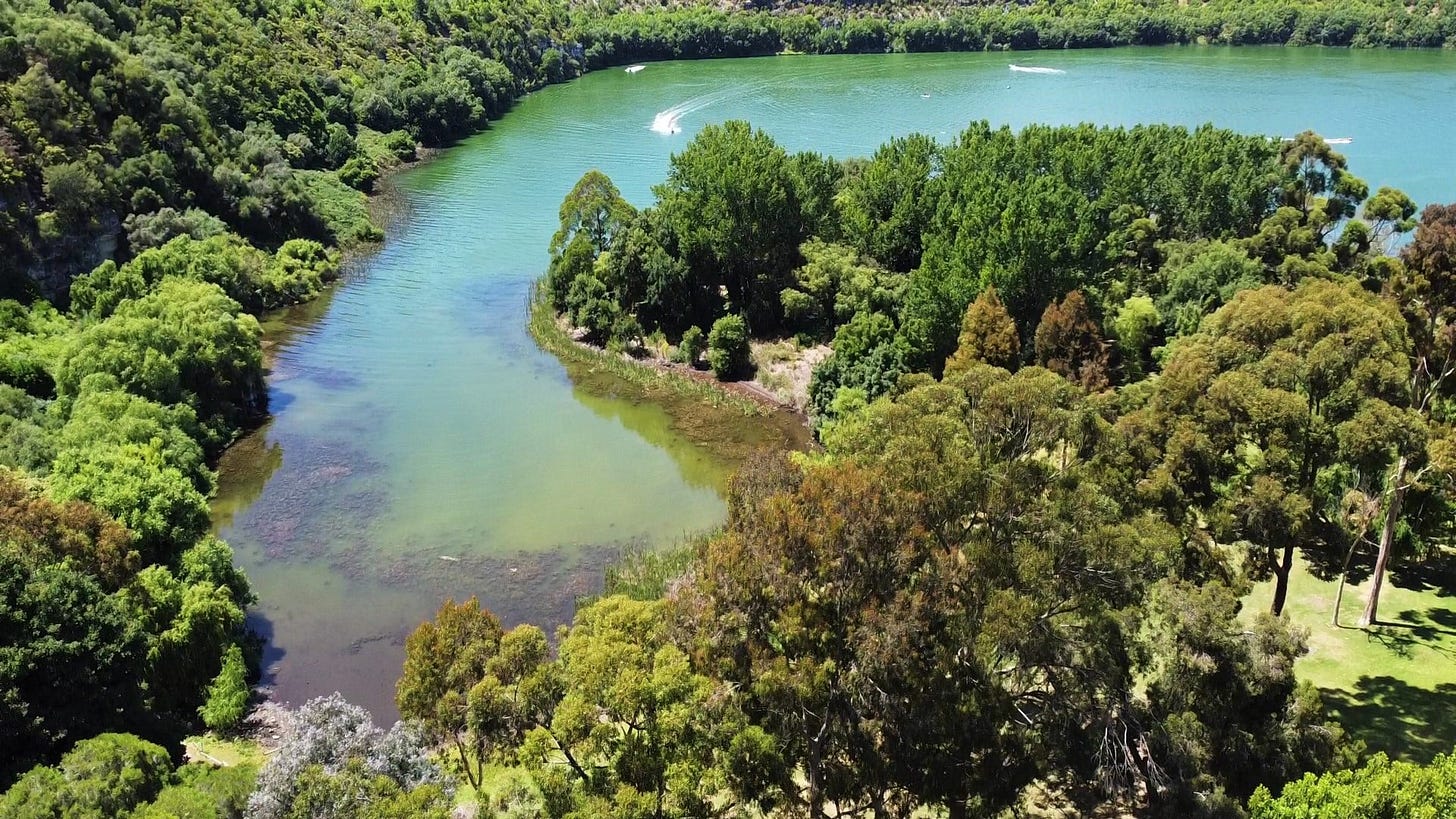
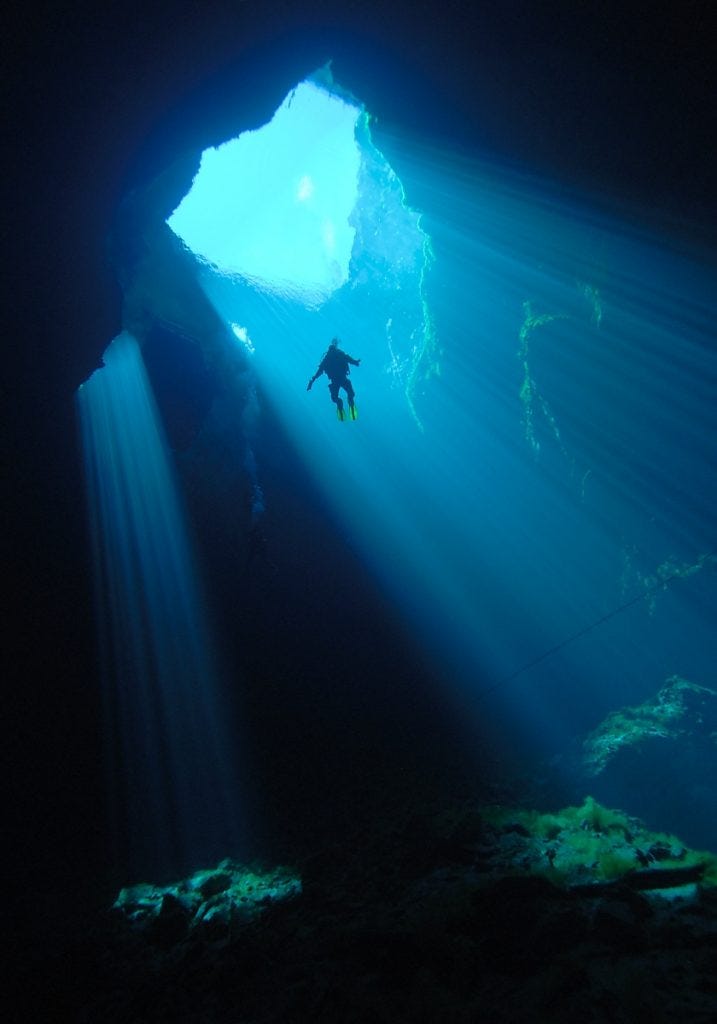
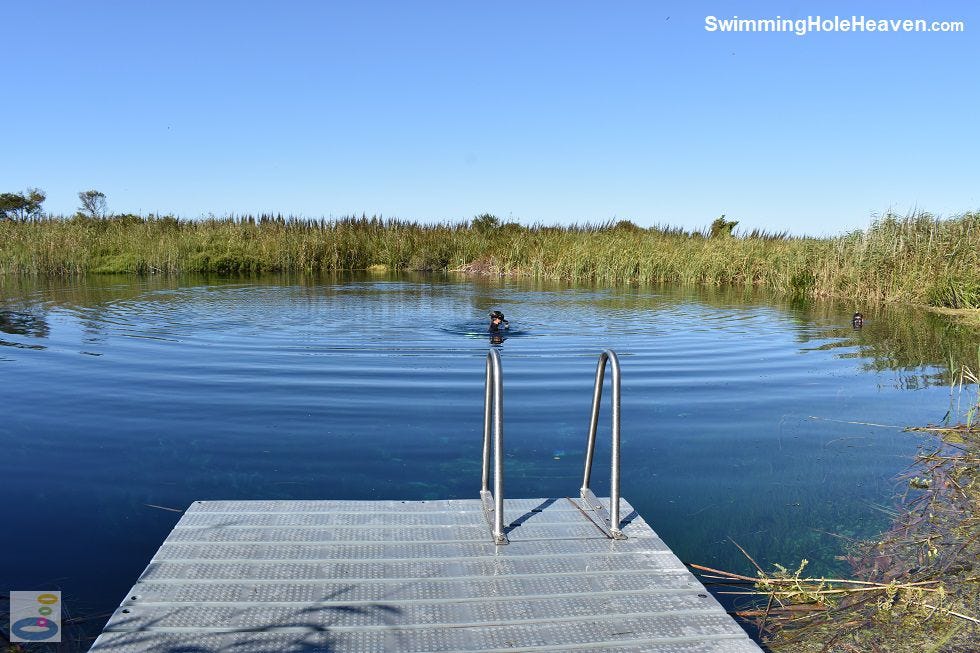
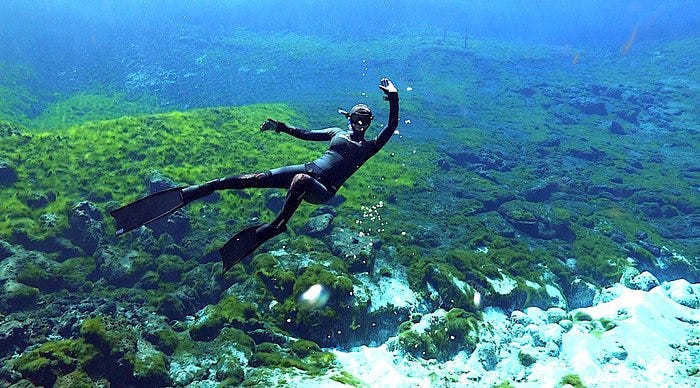
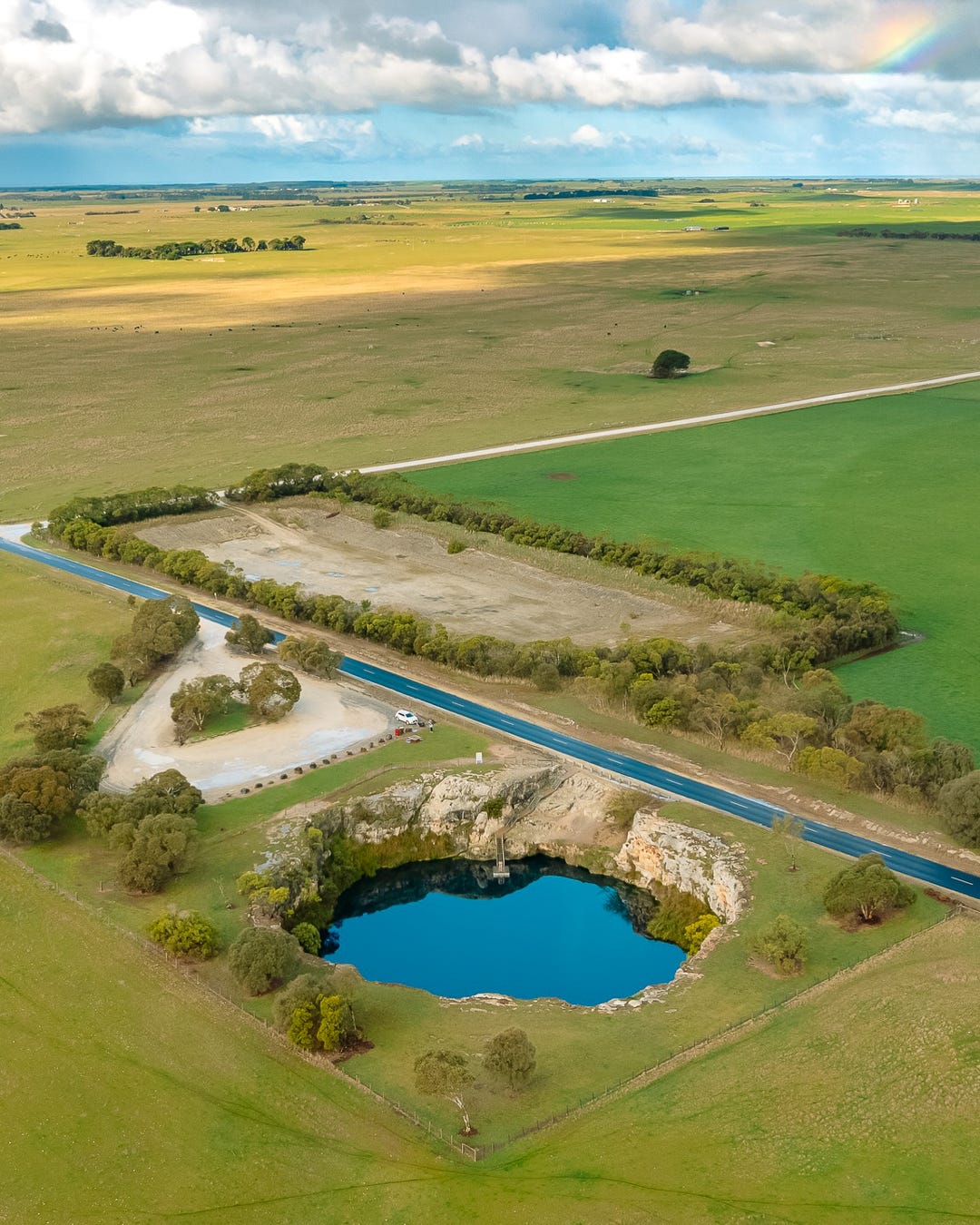
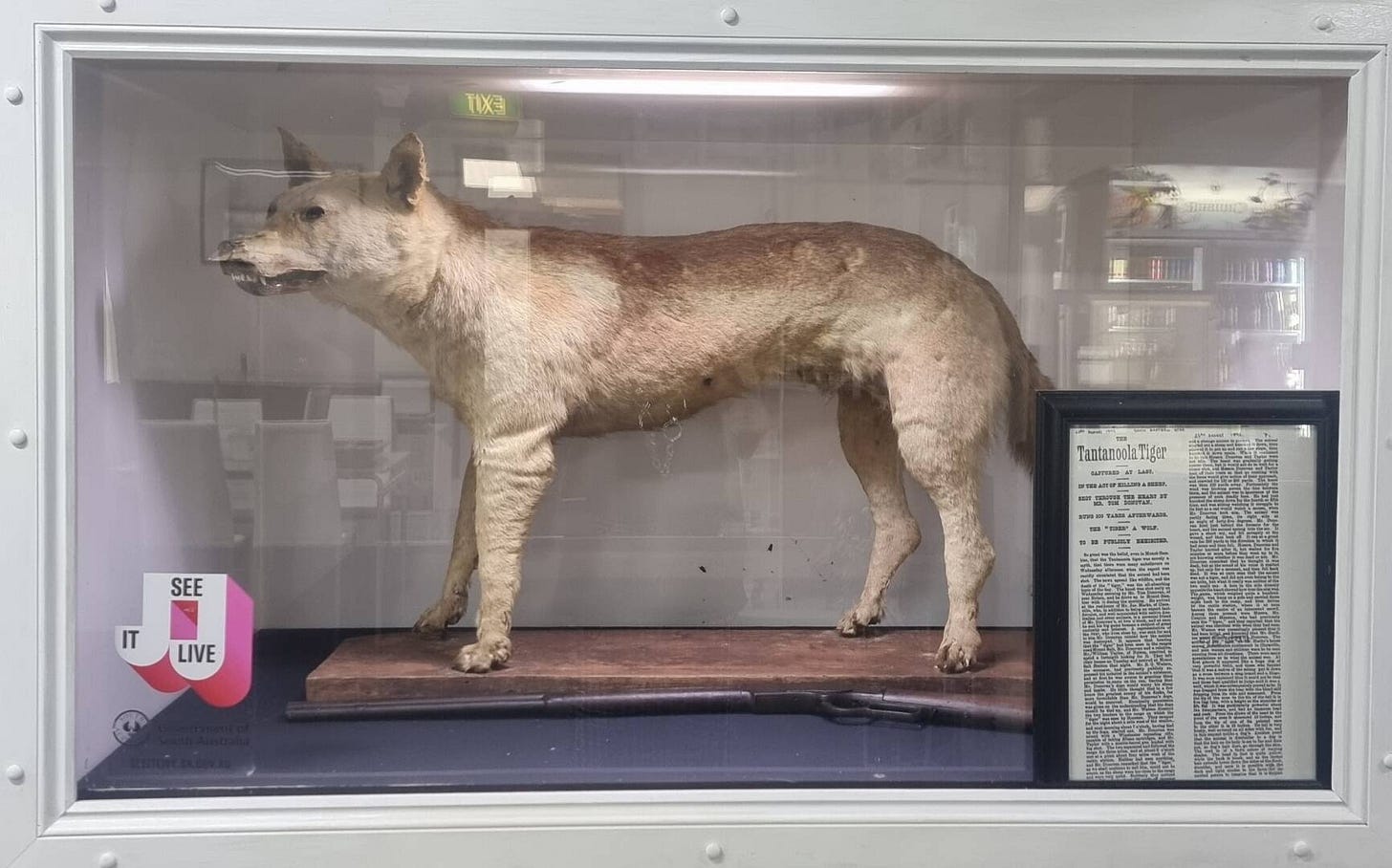
Nice article. I am learning about alot of this historical colonial land-rape stuff in my day job. It's terrible how Australia has per-capita, the world's shittest Colonial farmers.